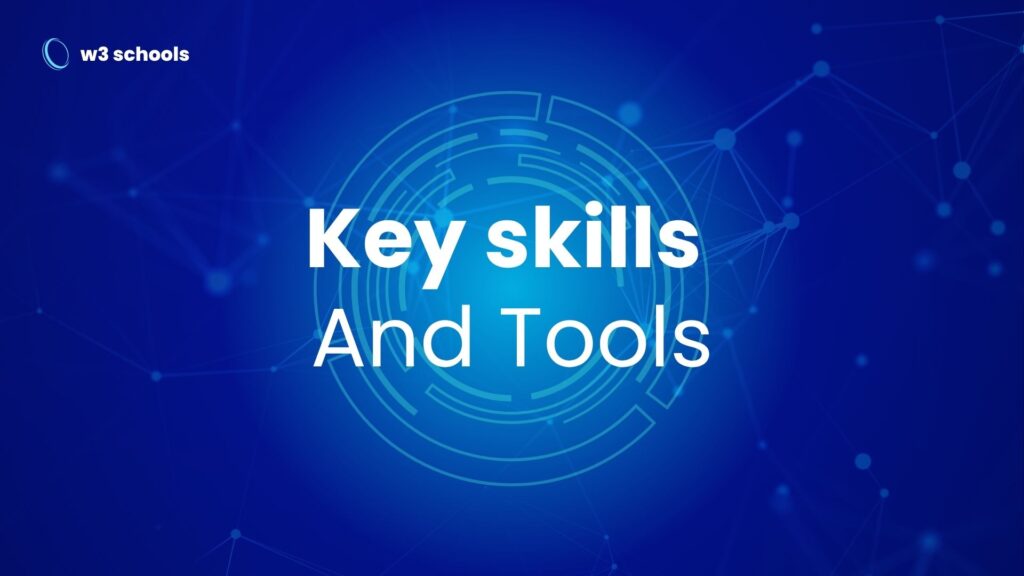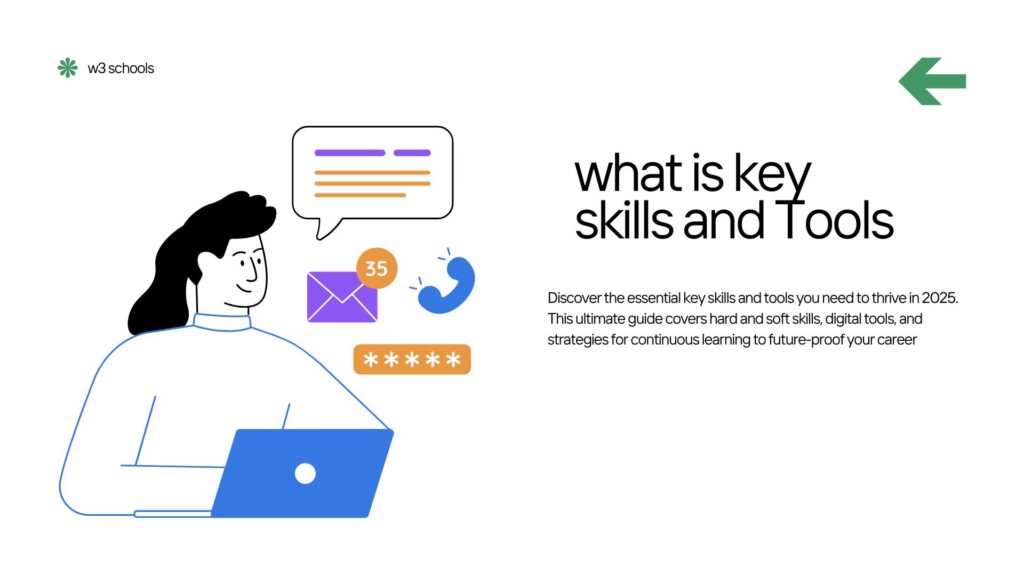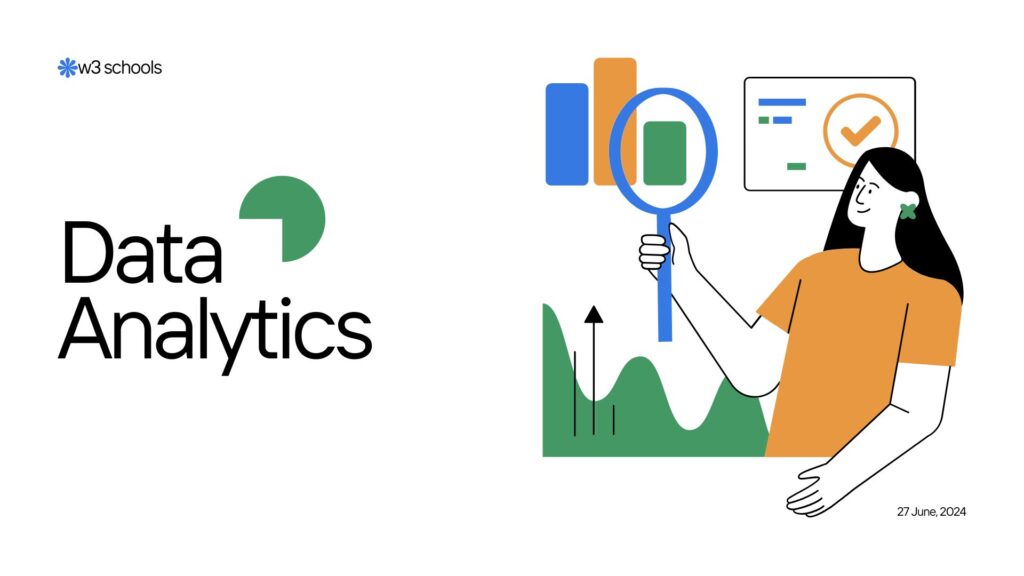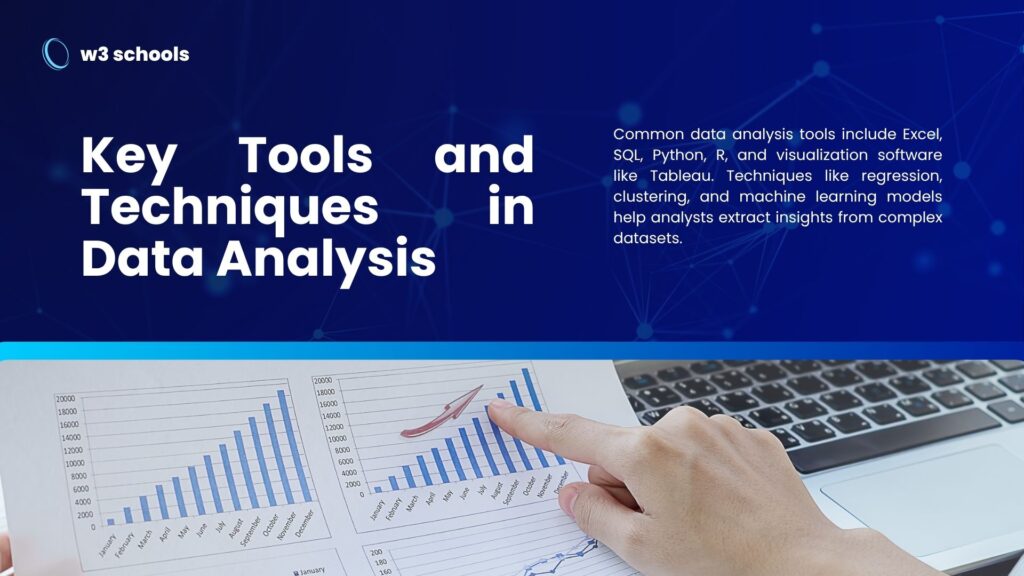
Discover the essential key skills and tools you need to thrive in 2025. This ultimate guide covers hard and soft skills, digital tools, and strategies for continuous learning to future-proof your career.
The New Currency of the Modern Workforce
In the rapidly evolving landscape of the 21st-century economy, the combination of key skills and tools has become the new currency for career success. It’s no longer enough to simply have experience or a degree. Today, your value is determined by your ability to leverage a powerful synergy between timeless human capabilities (skills) and the cutting-edge technology (tools) that amplifies them.
Gone are the days of a static skillset. The World Economic Forum predicts that 50% of all employees will need reskilling by 2025 as adoption of technology increases. This isn’t a distant future; it’s the present reality. Whether you’re a seasoned professional, a recent graduate, or navigating a career change, understanding which skills to cultivate and which tools to master is paramount.
This comprehensive guide is designed to be your roadmap. We will deconstruct the ecosystem of modern professional development, moving beyond generic lists to provide a deep dive into:
- The Critical Difference Between Skills and Tools: A foundational understanding of how they interact.
- The Power of Synergy: Why a skill is useless without the right tool, and a tool is powerless without the right skill.
- A Deep Dive into Core Skill Categories: Analyzing both durable “soft skills” and in-demand “hard skills.”
- A Comprehensive Toolkit for the Modern Professional: Categorized lists of essential software and platforms.
- Industry-Specific Skill and Tool Blueprints: Tailored advice for Tech, Marketing, Design, and Data.
- A Practical Framework for Continuous Learning: How to systematically identify, learn, and master new competencies.
This is more than an article; it’s a strategic guide to future-proofing your career and thriving in the age of digital transformation.

Part 1: The Foundation – Understanding the Skills & Tools Ecosystem
1.1 Defining the Terms: What Are Skills vs. Tools?
While often used interchangeably, “skills” and “tools” are distinct concepts that form a powerful partnership.
Skills are the learned capacities to perform specific tasks effectively. They are the how and the why. They reside within you. Skills are developed through practice, education, and experience. They can be cognitive (like critical thinking), physical (like operating machinery), or social (like communication).
- Examples of Skills: Public speaking, financial analysis, Python programming, strategic planning, conflict resolution.
Tools are the instruments or applications used to execute a task or apply a skill. They are the what. Tools are external objects, software, or platforms that enhance efficiency, accuracy, and reach. A tool can be as simple as a hammer or as complex as an enterprise Customer Relationship Management (CRM) system.
- Examples of Tools: Microsoft Excel, Salesforce, Adobe Photoshop, a soldering iron, ChatGPT.
1.2 The Inseparable Synergy: Why You Need Both
The true magic happens at the intersection of skill and tool. This synergy is the engine of modern productivity and innovation.
- A Skill Without a Tool is Inefficient: Imagine a master data analyst forced to work with only pen and paper. Their skill in recognizing patterns is immense, but without a tool like Python or Tableau, their output is slow, limited, and prone to error. The tool amplifies their innate skill.
- A Tool Without a Skill is Dangerous: Now, imagine someone with no analytical training being given access to Tableau. They can create colorful charts, but without the skill to interpret data, ask the right questions, or avoid logical fallacies, they are likely to produce misleading or incorrect insights. The tool, without the guiding skill, becomes a source of misinformation.
The Formula for Success is: (Foundational Skill) + (Enabling Tool) = Exceptional Outcome
- (Skill) Graphic Design Theory + (Tool) Adobe Illustrator = Stunning Brand Identity
- (Skill) Strategic Marketing + (Tool) Google Analytics & Meta Business Suite = High-ROI Digital Campaign
- (Skill) Structural Engineering + (Tool) AutoCAD = Safe and Innovative Building Design
Understanding this relationship is the first step toward intentional career development. You don’t just “learn Salesforce”; you learn the skill of sales pipeline management using the Salesforce tool.
Part 2: A Deep Dive into Key Skills – The Human Edge in a Digital World
Skills are often divided into two categories: Soft Skills and Hard Skills. A more accurate and modern framing is Durable Skills (transferable across jobs and industries) and Technical Skills (specific to a particular role or field).
2.1 Durable Skills (The “Power” Skills)
These are the human-centric skills that machines struggle to replicate. They are the bedrock of leadership, collaboration, and innovation.
1. Critical Thinking & Complex Problem Solving
In an ocean of data and misinformation, the ability to analyze information objectively, identify root causes, and develop effective solutions is paramount.
- What it is: The objective analysis and evaluation of an issue to form a judgment. It involves skepticism, logical reasoning, and pattern recognition.
- Why it’s key: It prevents costly mistakes, drives innovation, and allows you to navigate ambiguity. It’s the antidote to “this is how we’ve always done it.”
- How to develop it: Actively question assumptions. Engage with perspectives different from your own. Practice deconstructing complex news articles or business case studies. Learn formal frameworks like First Principles Thinking or The 5 Whys.
2. Creativity, Innovation, & Ideation
This isn’t just for artists. Creativity is the skill of generating novel and valuable ideas—whether for a new product, a more efficient process, or a unique marketing angle.
- What it is: The ability to transcend traditional ideas and create meaningful new ones.
- Why it’s key: It is the primary driver of competitive advantage. Automation can optimize, but human creativity is needed to invent the next big thing.
- How to develop it: Practice brainstorming techniques like SCAMPER. Schedule dedicated “idea time” without judgment. Expose yourself to diverse fields and hobbies to create new neural connections.
3. Communication & Storytelling
The ability to convey information clearly, persuasively, and empathetically is perhaps the most fundamental professional skill. In the digital age, this spans written (emails, reports), verbal (meetings, presentations), and non-verbal (body language, video presence) forms.
- What it is: The effective exchange of information and emotion.
- Why it’s key: Miscommunication is a primary source of inefficiency and conflict. Strong communicators build better relationships, lead more effectively, and sell ideas successfully.
- How to develop it: Practice active listening. Write deliberately and edit ruthlessly. Join a group like Toastmasters to improve public speaking. Learn to tailor your message to your audience.
4. Emotional Intelligence (EQ) & Empathy
EQ is the capacity to be aware of, control, and express one’s emotions, and to handle interpersonal relationships judiciously and empathetically.
- What it is: The ability to understand and manage your own emotions, and to recognize and influence the emotions of those around you.
- Why it’s key: It’s the foundation of teamwork, leadership, and customer service. High-EQ teams have less conflict, higher trust, and better collaboration.
- How to develop it: Practice self-reflection through journaling. Solicit honest feedback. Make a conscious effort to see situations from others’ viewpoints.
5. Collaboration & Teamwork
Modern work is almost never a solo endeavor. The skill of working effectively and respectfully with diverse teams—often across time zones and cultures—is non-negotiable.
- What it is: The process of working together to achieve a shared goal.
- Why it’s key: Complex projects require a diversity of thought and expertise. Effective collaboration accelerates progress and improves outcomes.
- How to develop it: Be reliable and meet your commitments. Practice giving and receiving constructive feedback. Learn to navigate group dynamics and conflict.
6. Adaptability & Lifelong Learning
The only constant is change. The ability to pivot quickly in response to new information, technologies, or market conditions is a critical survival skill.
- What it is: The willingness and ability to adjust to new conditions and acquire new knowledge continuously.
- Why it’s key: It future-proofs your career. Those who cannot adapt risk obsolescence.
- How to develop it: Step outside your comfort zone regularly. Cultivate a growth mindset. Dedicate time each week to learning something new, even if it’s not directly related to your job.
2.2 Technical Skills (The “Applied” Skills)
These are the teachable, measurable abilities specific to a job function. They are often the “what” you see on a job description.
1. Data Literacy & Analysis
The ability to read, understand, create, and communicate data as information is no longer a niche IT skill—it’s a core competency for almost every role.
- What it is: Understanding data sources, interpreting charts, performing basic analysis, and making data-informed decisions.
- Why it’s key: Data drives modern business strategy. From marketing ROI to operational efficiency, decisions are increasingly based on data, not gut feeling.
- Sub-skills: Statistical analysis, data visualization, SQL querying, A/B testing.
2. Digital Literacy & Computational Thinking
This goes beyond knowing how to use a computer. It’s about understanding how technology works and being able to interact with it in a conceptual way.
- What it is: The ability to use information and communication technologies to find, evaluate, create, and communicate information.
- Why it’s key: It’s the baseline for participating in the modern economy. It empowers you to learn new software quickly and understand the digital tools shaping your industry.
- Sub-skills: Understanding cloud computing, basic cybersecurity principles, algorithmic thinking.
3. Project Management
The discipline of initiating, planning, executing, controlling, and closing the work of a team to achieve specific goals and meet specific success criteria.
- What it is: Applying knowledge, skills, tools, and techniques to project activities.
- Why it’s key: Ensures projects are delivered on time, within scope, and on budget. It brings order to chaos.
- Sub-skills: Scoping, scheduling, resource allocation, risk management, Agile/Scrum methodologies.
4. Technical Writing & Documentation
The ability to explain complex, technical information clearly and concisely to a specific audience, whether they are developers, end-users, or executives.
- What it is: Simplifying the complex.
- Why it’s key: Poor documentation wastes countless hours and leads to errors. Excellent documentation enables scalability, knowledge sharing, and effective user onboarding.
- Sub-skills: Audience analysis, clear and concise language, information architecture.
Part 3: A Comprehensive Toolkit for the Modern Professional – The Digital Leverage
Your skills need vehicles for expression. Here is a categorized list of essential tools that form the modern professional’s digital arsenal.
3.1 Communication & Collaboration Tools
- Slack / Microsoft Teams: The central nervous system of the modern organization for real-time messaging, file sharing, and channel-based communication.
- Zoom / Google Meet: The standard for video conferencing, enabling remote and hybrid meetings, webinars, and screen sharing.
- Loom: An asynchronous video tool for quickly recording your screen, voice, and face to explain a process or give feedback without scheduling a meeting.
- Miro / Mural: Digital whiteboards for visual collaboration, brainstorming, workshops, and diagramming in real-time with remote teams.
3.2 Project & Task Management Tools
- Asana / Trello / Jira: Tools for organizing work into projects, tasks, and boards. They provide visibility into who is doing what and by when. (Jira is heavily geared towards software development).
- Notion / Coda: All-in-one workspaces that blend documents, wikis, databases, and project management. Highly customizable for everything from personal notes to entire company operations.
- ClickUp: A “one app to replace them all” contender that aims to combine tasks, docs, goals, and chat in a single platform.
3.3 Data Analysis & Visualization Tools
- Microsoft Excel / Google Sheets: The foundational tools for data manipulation, analysis, and visualization. Mastery of pivot tables, VLOOKUP/XLOOKUP, and macros is still a superpower.
- Tableau / Power BI: Advanced business intelligence platforms for creating interactive, shareable dashboards that turn complex data into actionable insights.
- Google Analytics / Adobe Analytics: Essential for understanding web traffic, user behavior, and digital marketing performance.
- SQL (Structured Query Language): The fundamental language for communicating with and manipulating databases. It’s a skill that acts as a tool.

3.4 Design & Creativity Tools
- Adobe Creative Cloud (Photoshop, Illustrator, InDesign): The industry standard for graphic design, photo editing, vector illustration, and publishing.
- Canva: A user-friendly, template-based design tool that has democratized graphic creation for non-designers.
- Figma: The leading collaborative interface design tool for designing websites, apps, and prototypes in real-time with teams.
- Final Cut Pro / Adobe Premiere Pro: Professional-grade video editing software for creating marketing videos, tutorials, and content.
3.5 Development & Technical Tools
- Visual Studio Code / JetBrains Suite: Powerful, lightweight code editors and Integrated Development Environments (IDEs) used by the vast majority of software developers.
- Git / GitHub / GitLab: Version control systems that allow developers to track changes in their code, collaborate on projects, and manage different versions. GitHub is also a massive social network for developers.
- Postman: An API platform for building and testing APIs, crucial for modern software integration.

3.6 Marketing & Sales Tools
- HubSpot / Salesforce: Comprehensive CRM platforms that manage a company’s interactions with current and potential customers, spanning marketing, sales, and customer service.
- Mailchimp / Klaviyo: Email marketing platforms for building audiences, designing campaigns, and automating customer journeys.
- Semrush / Ahrefs: Competitive intelligence suites for SEO, PPC, and content marketing, allowing you to see what’s working for your competitors.
- Hootsuite / Buffer: Social media management platforms for scheduling posts, engaging with audiences, and analyzing performance across multiple networks.
3.7 Automation & AI Tools (The New Frontier)
- Zapier / Make (formerly Integromat): Tools that connect your different web apps and automate workflows without writing code. (e.g., “When I get a new Gmail, save the attachment to Dropbox and notify me in Slack”).
- ChatGPT / Claude / Google Gemini: Generative AI assistants that can help with brainstorming, writing, summarizing, coding, and problem-solving. They are becoming force multipliers for knowledge work.
- UiPath / Microsoft Power Automate: Robotic Process Automation (RPA) tools for automating repetitive, rule-based digital tasks, such as data entry across legacy systems.
Part 4: Industry in Focus – Skill & Tool Blueprints
Let’s apply the skills and tools framework to specific, high-demand career paths.
4.1 The Digital Marketer
- Core Skills: Content strategy, SEO/SEM, data analysis, customer journey mapping, copywriting, A/B testing.
- Essential Tools:
- SEO: Ahrefs, Semrush, Google Search Console.
- Content & Social: WordPress, Canva, Hootsuite.
- Email & CRM: Mailchimp, HubSpot.
- Analytics: Google Analytics, Google Tag Manager.
- AI: Jasper (for copywriting), ChatGPT (for ideation).
4.2 The Software Developer
- Core Skills: Programming (e.g., Python, JavaScript, Java), algorithms & data structures, systems design, debugging, version control, Agile methodologies.
- Essential Tools:
- Development: VS Code, IntelliJ IDEA, Git/GitHub.
- Collaboration: Jira, Slack, Confluence.
- Deployment & Cloud: Docker, Kubernetes, AWS/Azure/GCP.
- API Testing: Postman.
4.3 The Data Analyst / Scientist
- Core Skills: Statistical analysis, data cleaning & wrangling, data visualization, SQL, storytelling with data, machine learning fundamentals.
- Essential Tools:
- Analysis & Coding: Python (Pandas, NumPy, Scikit-learn), R, Jupyter Notebooks.
- Databases & Querying: SQL, Snowflake, BigQuery.
- Visualization: Tableau, Power BI, Looker.
- Big Data Platforms: Databricks, Apache Spark.
4.4 The UI/UX Designer
- Core Skills: User research, wireframing, prototyping, interaction design, visual design, usability testing, information architecture.
- Essential Tools:
- Design & Prototyping: Figma, Sketch, Adobe XD.
- User Research: UserTesting, Maze.
- Collaboration: Miro (for workshops), InVision.
- Visual Design: Adobe Illustrator, Photoshop.
Part 5: The Learning Loop – A Practical Framework for Mastery
Knowing what to learn is only half the battle. Here is a systematic approach to how to learn.
5.1 Conduct a Personal Skills Audit
- Assess Your Current State: List your current skills and tools proficiency. Rate yourself on a scale of 1 (Awareness) to 5 (Expert).
- Identify Your Target Role: Look at 5-10 job descriptions for your dream job. What skills and tools are consistently mentioned?
- Mind the Gap: Compare your current state with your target. This gap analysis becomes your personalized learning curriculum.
5.2 Choose Your Learning Modality
Different people learn in different ways. Mix and match these approaches:
- Formal Courses: Coursera, edX, Udacity, LinkedIn Learning.
- Project-Based Learning: The most effective method. Pick a personal project (e.g., “build a portfolio website,” “analyze a public dataset”) and learn the skills/tools needed to complete it.
- Microlearning: Use platforms like YouTube, blogs, and podcasts for short, focused lessons.
- Communities & Mentorship: Join online forums (Reddit, Stack Overflow), attend meetups, and find a mentor.
5.3 The 70-20-10 Model for Development
A proven framework for allocating your learning efforts:
- 70% from On-the-Job Experiences: Volunteer for stretch assignments at work. Tackle new challenges that force you to learn.
- 20% from Social Learning & Feedback: Learn from peers, managers, and mentors. Ask for constructive feedback regularly.
- 10% from Formal Courses: Structured learning to build foundational knowledge.
5.4 Build a “Learning Habit”
Consistency trumps intensity.
- Schedule It: Block out 3-5 hours per week in your calendar for deliberate learning.
- Start Small: Aim for 25 minutes a day rather than an unrealistic 10 hours on a weekend.
- Document Your Journey: Keep a “learning log” where you note down what you learned. This reinforces the knowledge and builds a record of your growth.
Conclusion: Your Journey Starts Now
The landscape of work will continue to shift, but the fundamental principle remains: your career security and growth lie in your portfolio of key skills and tools. It is a continuous, lifelong journey of learning, unlearning, and relearning.
The most successful professionals of tomorrow are not those who know everything today, but those who have mastered the skill of learning itself. They are adaptable, curious, and proactive. They understand the powerful synergy between their human capabilities and the digital tools at their disposal.
Start today. Conduct your skills audit. Pick one skill and one tool from this guide that will have the biggest impact on your career. Commit to learning them. The future belongs to those who are prepared to build it, and you now have the blueprint.
Call to Action:
- What’s the key skill and tool you’re committing to master this quarter? Share it in the comments below to make your intention public.
- Bookmark this guide and return to it every 6 months for a personal audit.
- Share this with a colleague and start a learning accountability partnership.
